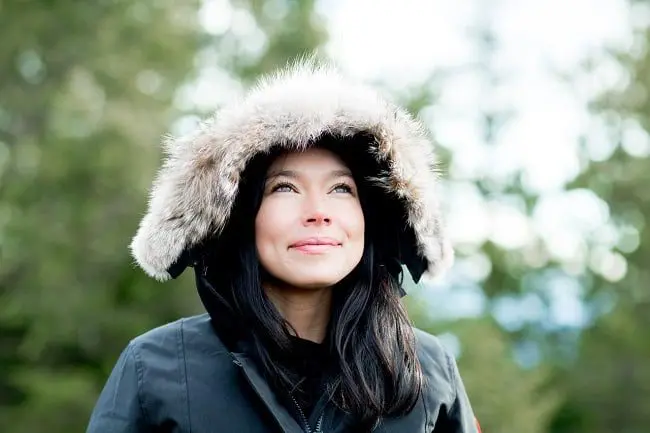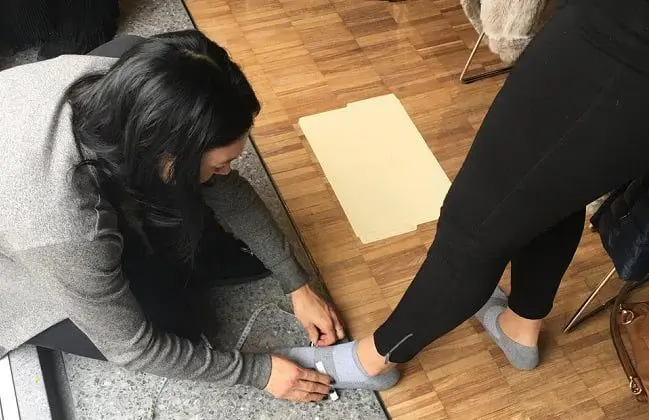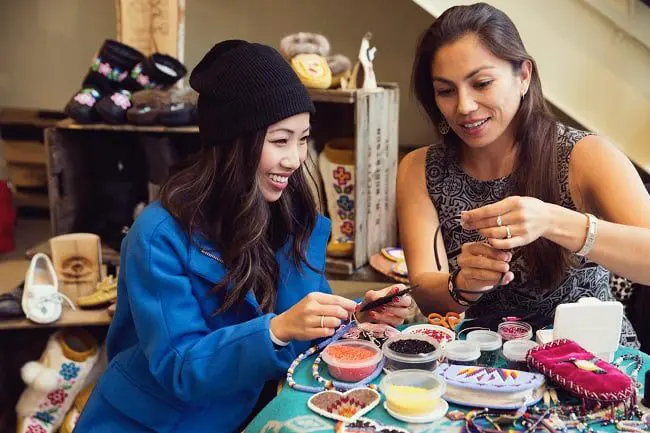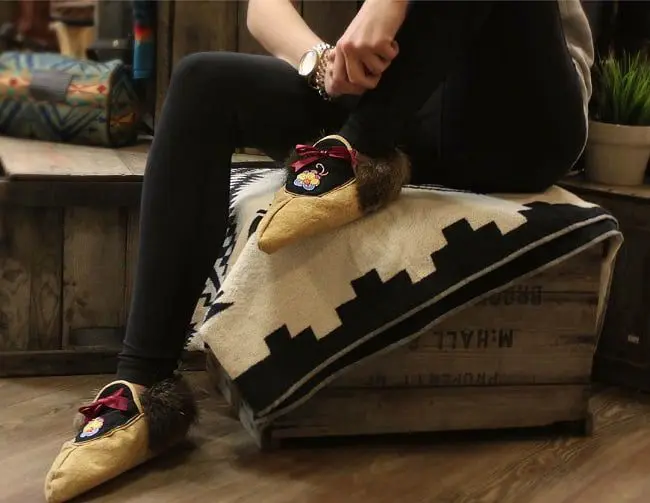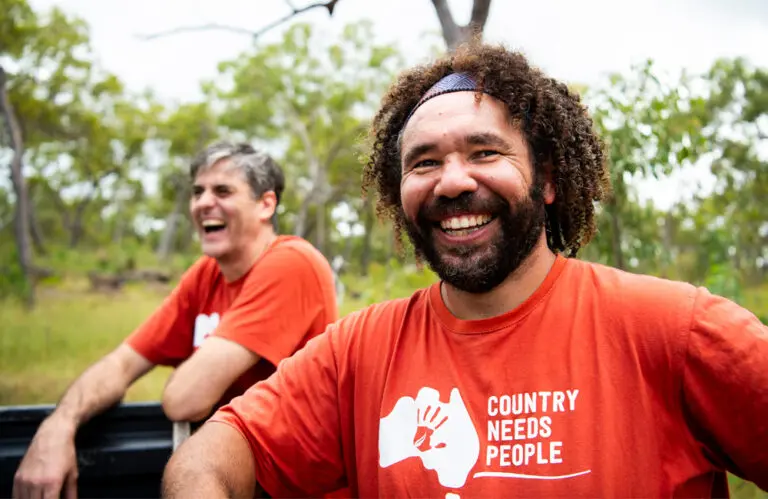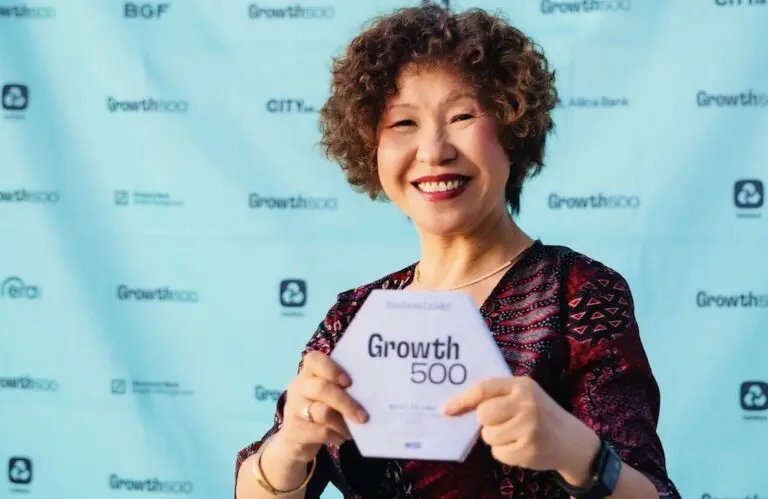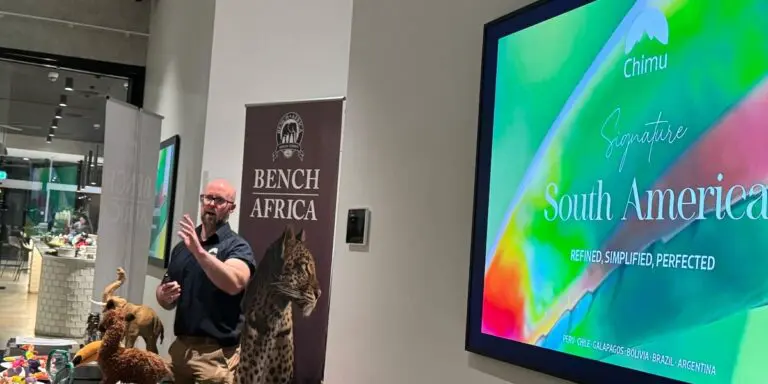A good set of shoes is an essential item for any traveller, but what if you came across footwear could take you somewhere much more meaningful than simply from a to b?
In Canada, mukluks and moccasins are part of an important tradition that is being protected by the Manitobah Mukluk Storyboot Project, a global online marketplace where Indigenous artists showcase their creations and receive 100% of the profits.
A TreadRight Heritage Initiative grant from The Travel Corporation’s TreadRight Foundation has helped the project to establish a semi-permanent Storyboot School at the Bata Shoe Museum in Toronto. Here, young Indigenous people can learn the traditional art of mukluk-making from their skilled elders.
Find out more about the TreadRight Foundation’s work.
KarryOn caught up with Manitobah Mukluks brand ambassador and Anishinaabekwe artist Sarain Fox to find out why this project is so important.
Why is the Manitobah Mukluks’ Storyboot School such an important project?
The Manitobah Mukluks’ Storyboot School is a fitting metaphor for the current state of Canada.
I saw my mother’s generation go through the residential school system. I witnessed the havoc it caused on our community’s health. Now our young people are using education to empower themselves and heal. We are sitting in circles together, reclaiming our knowledge and sharing it with others.
Bead by bead we are repairing the relationship and the damage it caused.
How did you come to be brand ambassador for the Storyboot School?

I became an ambassador for Manitobah Mukluks after shooting a music video for a Tribe Called Red. I styled the whole thing and starred in it. I’m a dancer by trade. I’ve always sought authentic and cutting edge Indigenous fashion.
When I discovered what Manitobah Mukluks was doing (taking a traditional mukluk and adding a technical sole for the city) I was hooked. I knew I had to get involved. Then when I discovered that they were also trying to keep traditions alive at the same time and I became an ambassador for life.
My mission is to tell Indigenous stories and support Indigenous resilience in all forms.
What role can travel play in the protecting Indigenous cultures?
Travel is essential for learning.
I have a nomadic nature and I learn the most when I’m on the move (adapting to different circumstances and places). On the road, my mother taught me to walk gently in territories that aren’t my own. So when I visit a new place, the first thing I do is learn about the people: who are they, how do they identify, how do they live and what is their creation story?
If you travel to Canada, you should learn about the Indigenous territories you’re in and support the people who continue to thrive there.
The Manitobah Mukluks Storyboot School in partnership with TreadRight (The Travel Corporation foundation) is a beautiful partnership that’s rooted in that philosophy.
We believe that the right way to travel in the world is to walk alongside it’s Indigenous people with projects that they lead.
I believe all Canadian’s should own a pair of mukluks and learn how to make them from an Indigenous instructor. Same goes for people who visit!
Acknowledging Indigenous knowledge (and supporting the real makers and artists) is the next phase of reconciliation. It makes you an ethical citizen and an ethical tourist.
How do Indigenous cultural experiences help travellers gain an authentic feel for a destination?
“Authentic” experiences is the key word. Our people have welcomed visitors here for hundreds of years and sometimes that didn’t work out for us so well!
It’s important to acknowledge and support Indigenous people without romanticising us or supplanting your own ideals onto us. We aren’t here for entertainment or novelty. We’re living and surviving just like you.
We’ve incorporated our traditions into new ways of life and we have always adapted to survive. I drive a car and take out the trash just like you, but I also go to ceremony and hunt. I work hard to bring my ancestors with me everywhere I go and acknowledge others’.
Are you noticing people becoming more interested in Indigenous culture?
I think people are becoming more aware of Indigenous cultures (which predate colonial cultures) and they are becoming more sensitive to relationships and the impact that they’ve had on us. Indigenous knowledge and Indigenous ways of life are driving that shift.
In Canada, people are beginning to recognise that Indigenous people have thousands of years of experience on the land and know how to survive in some of the coldest places. The tools we use to do that (like mukluks in the north) are becoming the go-to for Indigenous people and non-Indigenous people alike.
Recognising original knowledge and expertise is an important step in dismantling racist perceptions. In Canada, our residential school system sought to delegitimise Indigenous knowledge and our ways of life in order to rob us of our land and our agency. Now, we’re seeing new generations of Indigenous people reconnecting with their traditions and re-teaching settlers about how to live here in balance and with respect.
What are the main challenges and opportunities?
The greatest challenge is education. Working at Manitobah Mukluks has taught me that education can happen in the most unlikely places. We travel the country sharing stories about the MUKLUK with people.
My job is to convince them that mukluks are the best winter boot. And they are! Why? Because they work and my people have used them to survive here for thousands of years. There is no greater test than that.
I see a light go on in people’s head when they learn something as practical as that. They think, “wow, what else do Indigenous people know that I’ve ignored?”
We started the Storyboot School as a way to teach people about Indigenous art, knowledge and to share these kinds of “aha” moments with each other! A beading circle is the perfect place to learn about people and learn a new skill at the same time.
READ: TTC Chief “blown away” by Kenya voluntourism project
READ: TTC MDs share tales of travels with dads



